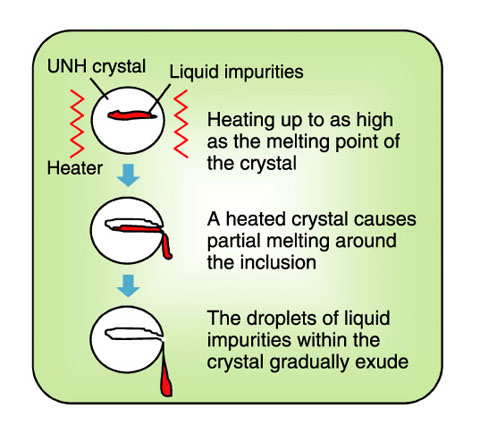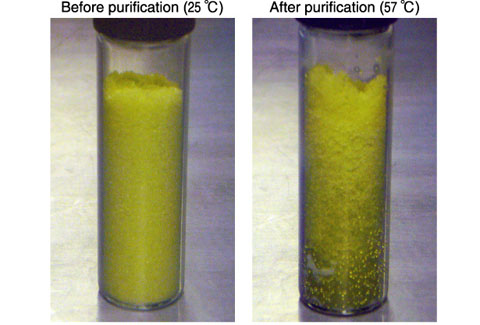
Fig.12-6 Schematic diagram of sweating phenomenon

Fig.12-7 UNH crystal before and after purification
The U crystallization process has been studied for the advanced aqueous reprocessing of fast reactor spent fuel. In the crystallization, the U in a dissolver solution of spent fuel is recovered as uranyl nitrate hexahydrate (UNH) crystals. Generally, crystals produced in the crystallizer are often contaminated by the mother liquor, which appears on the surface or inside the bodies of the crystals. Although the liquid impurities on the crystal surfaces are washed off with HNO3 solution, those included within the crystal are not removed. If the inclusions can be removed, the decontamination factor (DF) will increase. One crystal purification method called “sweating”, which is applied in industry, is proposed for UNH crystal purification. The crystals are purified by heating up to as high as their melting point, and the liquid impurities are removed from the crystal (Fig.12-6). Since the dissolver solution contains more impurities than materials used in industry and the chemical form of UNH is easily changed by heating, the purification effect of UNH by sweating should be evaluated carefully.
Purification experiments were carried out at the Chemical Processing Facility (CPF). The dissolver solution of mixed oxide (MOX) fuel containing Eu was cooled, and the UNH crystals were recovered. After washing, the crystals were placed in a glass vial and kept at a constant temperature. The U melt and incorporated mother liquor gathered at the bottom of the glass vial (Fig.12-7), whereas the Eu concentration in the UNH crystal left at the top of glass vial decreased. In this study, the purification of UNH crystals by sweating was confirmed.
Countercurrent equipment, the Kureha Crystal Purifier (KCP), was developed. The crude crystal is fed at the bottom of the column and is carried to the upper side by a conveyor. Part of the crystal is melted by a heating unit, and the crystal is washed with the reflux melts. Higher DFs of liquid impurities can be expected with KCP than in batch-wise purification, because UNH is purified by washing with the molten salt as well as by sweating.
This work was financed by the Ministry of Education, Culture, Sports, Science and Technology of Japan (MEXT).